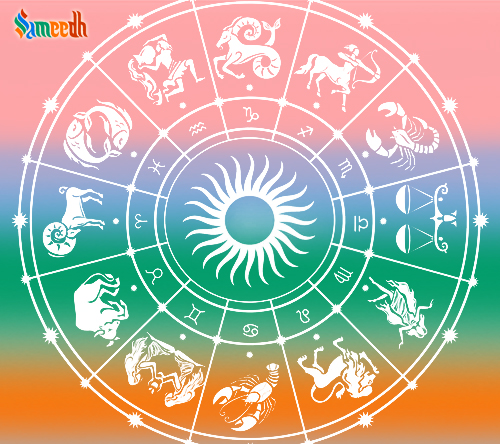A vinyasa is a smooth transition between asanas in styles of modern yoga as exercise such as Vinyasa Krama Yog, Ashtang Vinyas Yog and Bikram Yog, especially when movement is paired with the breath

INTRODUCTION
A vinyasa is a smooth transition between asanas in styles of modern yoga as exercise such as Vinyasa Krama Yog, Ashtang Vinyas Yog and Bikram Yog, especially when movement is paired with the breath. The vinyasa forms of yoga used as exercise, derive from Krishnamacharya’s development of a flowing aerobic style of yoga in the Mysore Palace in the early 20th century.
ORIGIN
According to Ashtanga Vinyasa Yog’s official history, Krishnamacharya learned the complete system of asanas (postures) and vinyasas (transitions) from an otherwise unknown document, the Yoga Kurunta, supposedly written 5,000 years ago by Vamana Rishi; the history tells that Krishnamacharya copied it out and taught it, unmodified. However, the original manuscript was supposedly destroyed by ants, and no copy survives. Krishnamacharya used ‘vinyasa’ in at least two different ways. One was in a broad sense to mean ‘an appropriately formulated sequence of steps (krama) for approaching a given posture’. The other was a ‘stage in the execution of an asana’. For example, the Sarvangasana sequence is introduced with the words ‘This has 12 vinyasas and the 8th vinyasa is the asana sthiti.’
MODERN-DAY PRACTICE
Vinyasa is a style of yoga characterized by stringing postures together so that you move from one to another, seamlessly, using breath. Commonly referred to as ‘flow’ yoga, it is sometimes confused with ‘power yoga’. As a philosophy, Vinyasa recognizes the temporary nature of things. We enter into a posture, are there for a while and then leave.
As modern yoga progresses into various innovative and accumulated forms the world is finding more and more convenient and useful techniques.
Vinyasa yoga has earned massive popularity because of its fast and sportive nature. The word Vinyasa means variants of movements in a special manner. This creative yoga form is a fast-paced yoga that contains multiple yoga postures followed by instructed breathing patterns in a designed way.
Students practice fast yoga movements with a balanced breathing exercise to find relaxation and mindfulness as per the instructor and session length.
Essential components of the Vinyasa yoga class consist of an extensive range of standing, seated, and prone poses, forward and backward folds, balance, and holds with synchronized breathing. Vinyasa yoga can also be called an umbrella term that holds a variety of individual yoga styles. This is also commonly known as flow yoga because of its transitional pattern of yoga movements.
Besides breathing and relaxation benefits, Vinyasa serves joint flexibility, core strength, muscle endurance, anxiety relief, and severe depression cure. And with disciplined practice and patience, anyone can be rewarded with maximum health benefits by Vinyasa.
Vinyasa allows freedom to have pace, holds, and posture limits as per an individual’s ability. That is why yoga aspirants enjoy this yoga style way more than many strict and traditional yoga techniques.
ANCIENT PRACTICE
While Vinyasa, or Vinyasa-Krama, dates back to the Vedic age—the earliest period of yoga thousands of years ago—it referred to a series, or sequence of steps, to make something sacred. The movement practice of Vinyasa is said to begin with T Krishnamacharya who has had the largest influence on how yoga, in general, is practiced today. Put all this together and Vinyasa is a breath-initiated practice that connects every action of our life with the intention of moving towards what is sacred, or most important to us.
“The Sanskrit word Vinyasa comes from a prefix vi, which means variation, and a suffix, nyasa, which means ‘within prescribed parameters.’” Srivatsa Ramaswami, student of Krishnamacharya for more than thirty years. He goes on to refer to classical yoga, from the Yoga Sutras of Patanjali, for the specific parameters: Steadiness, Comfort, Smooth and Long Breathing. The term Vinyasa is derived from nyasa, meaning ‘to place,’ and vi, meaning ‘in a special way.’ This indicates that we are not ‘throwing our bodies around’ but are bringing consciousness to each movement in each moment.
BENEFITS
- Vinyasa ends where it begins. We start in a posture, such as tadasana, travel through a myriad of options and come back to tadasana. If we listen, though, and pay close attention, the experience changes us.
- The Sequence: Chaturanga Dandasana, Urdhva Mukha Svanasana, Adho Mukha Svanasana …is commonly known as a ‘vinyasa’. Vinyasa is the breath-synchronized movement.
- Vinyasa doesn’t take long to learn to teach initially.
- Vinyasa yoga is athletic and aerobic. Surya Namaskaras, are foundational sequences of Vinyasa and done repetitively they work to get your blood pumping.
- Vinyasa yoga is fun.
To know more about Hinduism, its Vedic belief system, vedic lifestyle practices, etc. or to replenish your requirements of vedic pooja samagri, or to learn vedic practice systems like yoga, pranayam, etc. please visit our website Sameedh.
